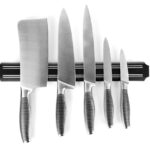Are you planning to move to a new home soon? Packing up your entire life can be quite overwhelming. With so many things on your plate, it’s important to have a solid plan in place to ensure a smooth transition from your old home to your new one. We understand that the process may seem daunting, but don’t worry – we’re here to help.
In this article, we’ll provide you with 10 simple tips for packing up your home for a move. From choosing the right moving supplies and truck, to protecting your belongings and labeling everything correctly – we’ve got you covered. By following these tips, you’ll be able to pack up with ease and enjoy a stress-free move.
Moving supplies: What you need to get started
When it comes to packing up your home for a move, having the right supplies on hand can make all the difference. Here’s a list of must-have items:
Boxes
Boxes are the backbone of any move. Make sure you have plenty in various sizes, and don’t forget specialty boxes for items such as dishes and wardrobe clothing.
Packing tape
You’ll need plenty of packing tape to secure your boxes and ensure their contents don’t spill out during transport. Invest in a quality tape gun for ease and efficiency.
Bubble wrap and packing paper
Protecting fragile items during transport is crucial. Bubble wrap and packing paper are both great options for wrapping delicate items such as glassware, electronics, and artwork.
Labels and markers
Labeling your boxes is essential for staying organized during the move-in process. Invest in high-quality markers and labels that won’t smudge or peel off during transport.
By stocking up on these essential moving supplies ahead of time, you’ll be well-equipped to tackle the task of packing up your home with ease.
Moving truck: Which one is right for you?
Choosing the right moving truck can be a daunting task, but it’s an essential part of any successful move. The vehicle you choose will depend on the size of your home, the distance you’re moving, and your budget. Here are some things to keep in mind when selecting a moving truck:
Size Matters
The size of the truck you need will depend on how much stuff you’re moving. As a general rule, a small apartment or studio can usually be moved using a 10-foot truck; a two or three-bedroom home may require a 16-foot to 22-foot rental; and larger homes will need even larger vehicles. Be sure to estimate your needs accurately so that you don’t end up with too little or too much space.
Distance Matters
If you’re moving across town, renting a smaller vehicle may be more practical than if you’re crossing state lines. Keep in mind that larger trucks are more difficult to maneuver on narrow streets or in tight parking lots. If you have limited driving experience with large vehicles like trucks, consider hiring professional movers who can handle everything for you.
Your Budget Matters
The cost of renting a moving truck varies depending on factors like distance traveled and duration of rental. Before making any decisions, make sure that the price fits within your budget and check for any additional fees such as fuel charges and insurance costs.
Consider Add-Ons
In addition to choosing the right sized vehicle, consider add-ons like towing capabilities, lift gates for heavy items or furniture dollies to help transport items more easily. These features will make your move easier and smoother overall.
Take these factors into consideration when selecting your rental truck and you’ll be well on your way to a successful move. Remember, choosing the right vehicle can make all the difference in how smoothly your move goes.
Moving blankets: Protecting your belongings
When it comes to moving, protecting your belongings is of the utmost importance. One of the best ways to ensure that your items stay safe during transport is by using moving blankets. These thick and durable blankets are designed to help cushion and protect your furniture and other household items from damage while in transit.
When selecting moving blankets, there are a few things to consider. First, make sure that the blankets you choose are large enough to adequately cover and protect your items. You’ll also want to look for blankets made from high-quality materials that can withstand wear and tear over time.
Another thing to keep in mind is that not all moving blankets are created equal. There are a variety of different types available, including those designed specifically for use with fragile items like mirrors or artwork. Be sure to choose the right type of blanket for each item you’re packing up.
To use moving blankets effectively, start by wrapping larger pieces of furniture such as sofas and chairs with one or more blankets before securing them with tape or stretch wrap. For smaller items, simply wrap them in a single blanket before placing them in a box.
Bubble Wrap: A Must-Have for Fragile Items
When it comes to packing fragile items, bubble wrap is a must-have. It is a simple yet effective way to protect your breakable items and ensure they arrive at your new home in one piece.
Bubble wrap comes in different sizes, so be sure to choose the appropriate size depending on the item you’re packing. For small and delicate items like glass figurines or jewelry, use small sheets of bubble wrap. For larger items like electronics or lamps, use larger sheets of bubble wrap or even bubble wrap bags.
To use bubble wrap, simply lay out a sheet on a flat surface, place the item on top, and fold the edges over. Then secure it with packing tape. Be sure to cover every inch of the item with bubble wrap to provide maximum protection during transport.
Another tip for using bubble wrap is to not skimp on it. Use as much as you need to thoroughly protect each item. Remember that moving can be rough on your belongings, so taking extra precautions now can save you headaches later.
Labeling Supplies: Keeping Organized
Moving can be a chaotic experience, but it doesn’t have to be. One of the best ways to keep everything organized is through proper labeling. Having everything labeled correctly ensures that you’ll know exactly where your items are and makes unpacking a breeze.
Labels and Markers
One of the most important labeling supplies you’ll need is labels and markers. You can use pre-printed labels or create your own using sticky notes or blank labels. Be sure to label each box with the room it belongs in, a brief description of its contents, and whether it’s fragile or not. Using different colored markers for each room can also help speed up the unpacking process.
Color-Coding System
If you’re someone who loves to color-code everything, this method might be perfect for you. Assign a color to each room in your new home and use colored labels or tape to identify which boxes belong in which rooms. This method will help your movers quickly identify where each box goes without having to read detailed descriptions on every single box.
List-Making
If you prefer lists over colors, try making inventory lists instead. Create a list of all the items in each box as you pack them up and number the boxes accordingly. Keep these lists with you during the move so that if something goes missing during transportation, you’ll know exactly what was lost and where it was located.
The Importance of Organization
In addition to making unpacking easier, proper labeling also ensures that nothing gets lost during transportation. It’s important to keep similar items together so they won’t get damaged en route from one location to another.
In conclusion, labeling supplies such as markers, labels, and tape can make all the difference when it comes to keeping organized during a move. Using a color-coding system or making inventory lists may take more time upfront but will save you time and frustration in the long run. Remember that organization is key to ensuring your belongings arrive safely at your new home.
Furniture pads: Keeping furniture safe during transport
Moving your furniture can be one of the most challenging parts of the moving process. Not only can it be heavy and difficult to maneuver, but it’s also important to ensure that it arrives at your new home in the same condition as when it left. That’s where furniture pads come in – they are a simple and effective way to keep your furniture safe during transport.
What are furniture pads?
Furniture pads, also known as moving blankets or furniture movers, are thick pieces of material designed to protect your furniture during a move. They come in a variety of sizes and materials, including cotton, polyester, and woven fabric. Depending on the size of your furniture, you may need multiple blankets to cover each piece.
How do you use them?
Using furniture pads is easy – simply wrap them around your furniture pieces before loading them onto the moving truck. For larger pieces like sofas and chairs, you may want to secure the blanket with packing tape or straps to ensure that it doesn’t slip off during transport. You should also place additional padding between any glass surfaces or fragile areas on your furniture for added protection.
Why are they important?
Furniture pads serve several important purposes during a move. First and foremost, they protect your belongings from scratches, dents, and other damage that can occur during transport. Additionally, they help prevent any items from shifting around in the truck while en route to your new home – this can help reduce the risk of damage due to sudden stops or turns.
Tips for choosing the right ones
When selecting furniture pads for your move, there are a few things to consider:
- Size: Make sure that the pads you choose are large enough to wrap around your furniture pieces.
- Material: Different materials offer varying levels of protection – make sure to choose a material that will suit your needs.
- Quantity: Depending on the size of your move, you may need several sets of furniture pads to protect all of your belongings.
In conclusion, furniture pads are an essential part of any successful move. By using them to protect your furniture during transport, you can ensure that everything arrives at your new home in the same condition as when it left. With these tips and tricks in mind, you’ll be well on your way to a stress-free moving experience!
Packing paper: Wrapping items for added protection
When it comes to packing fragile items like glassware, porcelain, and ceramics, packing paper is a must-have. It provides an extra layer of protection against bumps and scratches during transport. Packing paper can be purchased from any moving supply store or office supply store. Alternatively, you can use newspaper or tissue paper in a pinch.
To wrap your fragile items with packing paper, start by placing a piece of the paper on a flat surface. Then place the item in the center of the paper and wrap it up tightly. Make sure to tuck in any loose ends or corners to ensure maximum protection. If you are packing multiple fragile items together, make sure to separate them with additional layers of packing paper.
It’s important not to overstuff your boxes with too many fragile items as this can increase the risk of damage during transport. Instead, pack similar-sized items together and use plenty of packing material in between each item.
Don’t forget to label your boxes as “fragile” so that anyone handling them knows to treat them with care. You can also add additional warning labels such as “this side up” or “handle with care” for added peace of mind.
Packing Materials: What Else Can You Use?
When it comes to packing materials, there are plenty of options beyond the standard bubble wrap and packing paper. These alternatives can not only save you money, but they can also be more eco-friendly.
Newspaper
One option for wrapping items is newspaper. Although it’s not as sturdy as other packing materials, it can provide a layer of protection for non-fragile items such as clothing or linens. Be careful when using newspaper with fragile items because the ink may transfer onto them.
Towels and Clothes
Your towels and clothes can do double duty when moving. Wrap fragile items such as dishes or glassware in towels or clothing to provide extra padding. This saves space in your packing boxes and reduces the need for additional materials.
Air Pillows
Another eco-friendly option is air pillows made from recycled materials. These pillows inflate with a pump or by mouth and can be used to fill empty spaces in your boxes, providing cushioning for your belongings during transport.
Cornstarch Peanuts
If you’re looking for a biodegradable solution, cornstarch peanuts are an excellent option. Made from natural ingredients, these peanuts dissolve in water and won’t harm the environment if they end up in a landfill.
By exploring alternative packing materials beyond the standard bubble wrap and packaging paper, you can save money while also being more environmentally conscious during your move.
Packing tape: The finishing touch
Packing tape is a basic necessity when it comes to moving homes. It is the glue that holds everything together and ensures that your boxes stay closed during the move. However, not all packing tapes are created equal. Choosing the right packing tape can make a big difference in protecting your items during transit.
Types of Packing Tape
There are different types of packing tapes available in the market, each with its own unique properties. The most popular types of packing tapes include:
- Acrylic tape: This is a general-purpose tape that works well for most applications.
- Hot melt tape: This type of tape has higher adhesive strength and is ideal for heavy-duty items or boxes.
- Filament tape: Reinforced with fiberglass strands, this tape is perfect for securing heavier items like furniture and appliances.
Tips on Using Packing Tape
To ensure that your boxes are properly sealed and secured, here are some tips on using packing tape:
- Cut strips of appropriate length: Cutting too little or too much can cause unnecessary waste or insufficient protection.
- Clean surfaces before applying: Dirt or debris can affect the adhesive strength of the packing tape, so make sure surfaces are clean before use.
- Avoid over-taping: While you want to make sure that everything is secure, using too much packaging tape can damage boxes and cause them to buckle under pressure.
- Cross-tape fragile items: To protect fragile items from breaking during transport, cross-tape the box with packing tape for added reinforcement.
Conclusion
Packing tape may seem like a minor detail, but it plays a crucial role in ensuring the safety of your belongings during a move. By choosing the right type of tape and using it correctly, you can ensure that your boxes stay closed and your items stay protected. With these tips in mind, you can take one step closer to a successful and stress-free move!
Conclusion: Saying goodbye to your old home with ease
In conclusion, packing up your home for a move can be a daunting task, but it doesn’t have to be overwhelming. By following these simple tips, you can ensure that your move is as smooth and stress-free as possible. Remember to take breaks when needed, ask for help if necessary, and most importantly, enjoy the journey of moving into your new home!
Bonus Tip: Enjoying your New Home
After all the hard work of packing, moving, and unpacking, it’s finally time to enjoy your new home! It can be a daunting task trying to settle into a new place, but with a little bit of effort and some helpful tips, you can make the transition smoother.
Personalize Your Space
Your new home should reflect your personality and style. Take some time to personalize your space by decorating it with your favorite items. Hang up some photos or artwork that makes you happy. Add some throw pillows or curtains in your favorite colors.
Creating a cozy and comfortable environment will help you feel more at ease in your new home. Invest in some comfortable furniture pieces that fit your lifestyle and make you feel relaxed.
Get Involved in Your New Community
Moving to a new community can be daunting and lonely. However, getting involved is important as it helps you make friends quickly while creating beneficial networks around you.
You may join local clubs or groups like book clubs or sports groups which have regular meetings that allow you to interact with other members of the society.
In addition, volunteering for community projects is an excellent way to meet people while making an impact on society.
Create Routines
Having routines creates familiarity with our surroundings which makes us feel more settled. To create routines in a new community:
- Create mealtime traditions – explore local restaurants or cook together as a family
- Create exercise routines – join fitness classes or visit local parks for scenic walks
- Create nightly rituals – enjoy quiet family time together before bed
Stay Positive
Moving homes can be a stressful and challenging experience. But it’s essential to maintain a positive attitude throughout the process. Instead of focusing on the negative aspects of moving, try to see it as an opportunity for growth and change.
Remember that the moving process is temporary. In no time, you will adapt to your new surroundings and create new memories that will be cherished forever.
By following these tips, you can make the transition into your new home much smoother. Remember to take things one step at a time and enjoy the exciting new chapter in your life!






